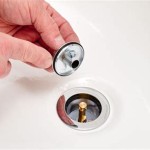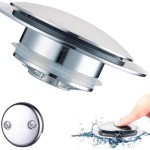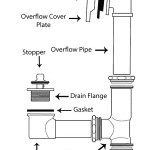Are Bathtubs Standard Size? Understanding Bathtub Dimensions and Variations
The question of whether bathtubs are a standard size is not a simple one. While there are common dimensions encountered frequently in residential construction and renovation, the term "standard size" can be misleading. Bathtub sizes are subject to variations depending on style, material, and intended use. Understanding the usual dimensions, along with the factors that influence them, is crucial for successful bathroom planning and remodeling projects.
Typical Bathtub Dimensions: Length, Width, and Depth
When discussing bathtub sizes, three primary dimensions are considered: length, width, and depth. The length refers to the measurement from the inside of one end of the tub to the inside of the opposite end. The width is the measurement of the interior of the tub from side to side. Depth refers to the distance from the bottom of the tub to the overflow drain.
The most commonly encountered bathtub length is 60 inches (5 feet). This length is frequently considered the "standard" for alcove bathtubs, which are designed to fit snugly between three walls. However, lengths ranging from 54 to 72 inches are also available and commonly used, depending on the available space and the desired bathing experience.
In terms of width, the typical bathtub measures around 30 inches. Again, this dimension sees variation, with some tubs being as narrow as 27 inches and others extending to 32 inches or even wider. The width significantly impacts the comfort level and bathing space available to the user.
The depth of a bathtub, measured from the bottom to the overflow drain, usually falls between 14 and 16 inches. This measurement dictates the amount of water the tub can hold and, consequently, the immersive experience it provides. Deeper tubs, such as soaking tubs, can have significantly greater depths, often exceeding 20 inches.
Therefore, while 60 inches in length, 30 inches in width, and a depth of 14-16 inches represent commonly found dimensions, it's important to recognize that these are more accurately described as "typical" rather than strictly "standard." The bathroom layout and personal preferences often dictate deviations from these typical measurements.
Factors Influencing Bathtub Size and Shape
Several factors contribute to the varying dimensions and shapes found in bathtubs. These include the bathtub style, the material used in its construction, and any specific features designed to enhance the bathing experience. Alcove tubs, drop-in tubs, corner tubs, and freestanding tubs each have characteristic size ranges.
Alcove bathtubs, as mentioned previously, are typically designed to fit within a three-walled recess. This restriction often leads to a standardized length of 60 inches to accommodate the stud spacing in most walls. However, even within alcove tubs, variations exist, with some manufacturers offering shorter or longer options to fit smaller or larger bathrooms.
Drop-in bathtubs, which are installed within a framed enclosure, offer slightly more flexibility in terms of size. Because the enclosure is custom-built, the size of the tub is not as rigidly constrained by pre-existing wall layouts. This allows for more experimentation with length, width, and depth.
Corner bathtubs, often designed in a triangular or pentagonal shape, maximize space utilization in smaller bathrooms. Their dimensions are less easily defined by simple length and width measurements. Instead, the overall footprint and the internal bathing space are key considerations. Corner tubs often prioritize soaking depth over length, providing a luxurious bathing experience in a compact form.
Freestanding bathtubs, gaining popularity in modern bathroom designs, offer the greatest level of flexibility in terms of size and shape. Because they are not constrained by walls or enclosures, they can be manufactured in a wide range of dimensions. Freestanding tubs can range from smaller, space-saving models to large, opulent soaking tubs. Materials also play a significant role in determining the size and shape limitations. Acrylic, cast iron, and steel each have unique properties that influence the design possibilities.
Beyond the basic dimensions, features such as integral armrests, contoured backrests, and strategically placed jets can also influence the overall size and shape of the tub. A tub designed with substantial armrests, for example, may have a larger external width than a simpler model, even if the internal bathing space is similar.
The Importance of Accurate Measurements and Planning
Regardless of whether a bathtub is considered "standard" or not, accurate measurement and thorough planning are essential for a successful installation. Before selecting a bathtub, the available space in the bathroom must be carefully measured. This includes not only the floor space but also the height and any potential obstructions, such as windows or doorways.
When replacing an existing bathtub, the dimensions of the old tub should be carefully recorded. While it may be tempting to assume that a new tub of a similar length will fit perfectly, it is always prudent to double-check. Minor variations in width or depth can sometimes create unexpected challenges during installation.
Furthermore, access to the plumbing connections must be considered. The drain location and the water supply lines need to be easily accessible for installation and maintenance. Choosing a bathtub with compatible plumbing connections can save time and money during the installation process.
Beyond the physical dimensions of the tub, the weight of the tub, especially when filled with water, should also be taken into account. The floor structure needs to be capable of supporting the combined weight of the tub, water, and the person using it. In older homes or when installing a particularly large or heavy tub, it may be necessary to consult with a structural engineer to ensure that the floor can adequately support the load.
Finally, consider the ergonomics of the bathtub. The height of the tub, the slope of the backrest, and the placement of the controls should all be comfortable for the intended user. Ideally, the bathtub should be tested (without water, of course) to ensure that it provides a comfortable and safe bathing experience.
In conclusion, while certain bathtub dimensions are more commonly encountered than others, the term "standard size" is an oversimplification. Bathtub sizes vary greatly depending on style, material, and features. Careful measurement, thorough planning, and consideration of the factors discussed above are crucial for selecting the right bathtub for a given space and ensuring a successful installation.

Standard Bathtub Sizes 2024 Guide Modernize

Bathtub Sizes Standard Tub Size Guide

Standard Bathtub Sizes 2024 Guide Modernize

Standard Bathtub Sizes Which Is Best For Your Bathroom

Bathtubs Choosing The Perfect Bathroom Tub

Typical Types Of Bathtubs

Standard Bathtub Dimensions Types Of Foyr

Swiss Madison 48 In Left Drain Rectangular Alcove Bathtub White Sm Ab552 The Home Depot

Standard Bathtub Sizes Which Is Best For Your Bathroom

Standard Bathtub Dimensions Types Of Foyr
Related Posts








